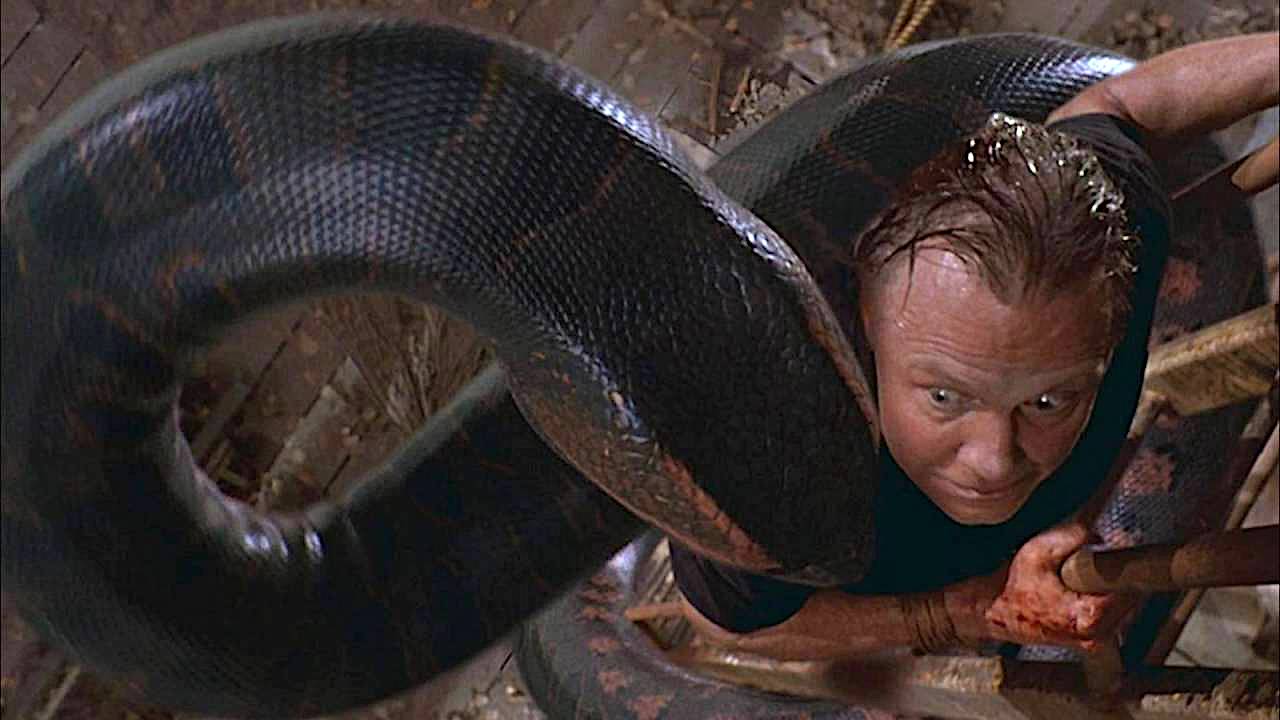Ranked among “The 100 Most Enjoyably Bad Movies Ever Made,” ‘Anaconda’ is an action-packed flick that boasts a solid cast including Jennifer Lopez, Ice Cube, Jon Voight, Jonathan Hyde, and Owen Wilson. Although it works along the lines of most typical monster horror thrillers, its depiction of animatronic CGI-induced anacondas can often seem real. So, in case you’re wondering if the film’s depiction of colossal snakes has any realism or not, here’s everything you need to know.
Anaconda is a Work of Fiction

No, Anaconda is not based on a true story. The movie’s over-the-top depiction of giant snakes is a work of fiction. However, there is still a tinge of realism to its portrayal of anacondas. For instance, the movie refers to Amazon green anacondas and claims that they are among the world’s largest snakes. Although bigger snakes have lurked on the Earth’s surface, the green anacondas are, indeed, one of the largest ones. In fact, the green anacondas are so huge that researchers have had a tough time determining their location, capturing them, and then measuring them.
Another fact about Anacondas that the movie gets right is that they are not poisonous snakes and only prey on other animals by constricting them. As shown in the film, anacondas wrap themselves around the bodies of their prey and then squeeze the life out of them. However, contrary to common belief, the constriction of an anaconda does not break the bones of prey, nor does it suffocate it. The anaconda squeezes its prey in such a way that its circulatory system gets disrupted, which restricts the blood flow to the brain. As a result, the victim suffers from severe ischemia, leading to instant death.
Anacondas have mobile joints in their jaws and infused ligaments on both sides of their mandibles, which allows them to swallow their prey in one go. Moreover, their stretchy skin and lack of sternum enable them to change shape while consuming a copious amount of food. So clearly, the movie’s portrayal of Jon Voight being devoured whole by a giant anaconda has some realism to it. However, the film also shows that anacondas often regurgitate their prey only to fulfill their killing instinct, which is not accurate. Although snakes regurgitate their prey, they only do it when they have to increase their mobility to escape a potential threat.
Apart from the liberties that it takes with its portrayal of giant anaconda snakes, the movie also refers to the highly feared candiru fish. Going by popular myths surrounding it, the fish enters through the urethra and then lodges itself inside the human body by using sharp barbs. From Grey’s Anatomy to Dwayne Johnson’s ‘Welcome to the Jungle,’ the telltales surrounding the candiru fish have been highly exaggerated in pop culture. In reality, candiru attacks in humans are extremely rare. To date, there has only been one documented case in Brazil’s Manaus where the fish had to be surgically removed from an unfortunate patient’s genitals.
Read More: Best Owen Wilson Movies


You must be logged in to post a comment.